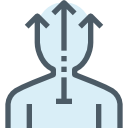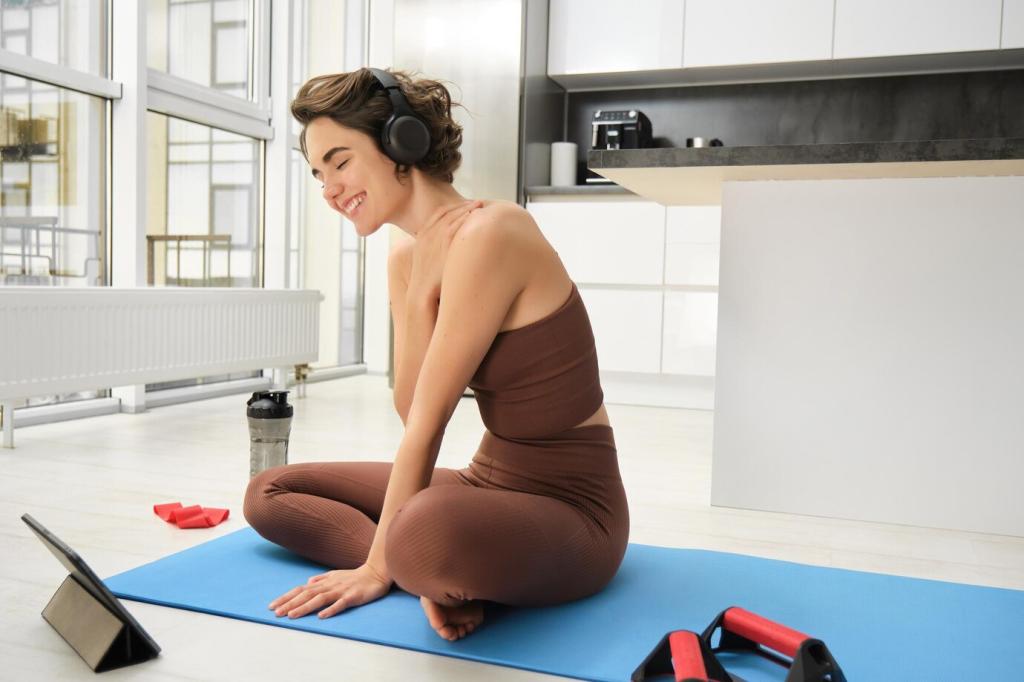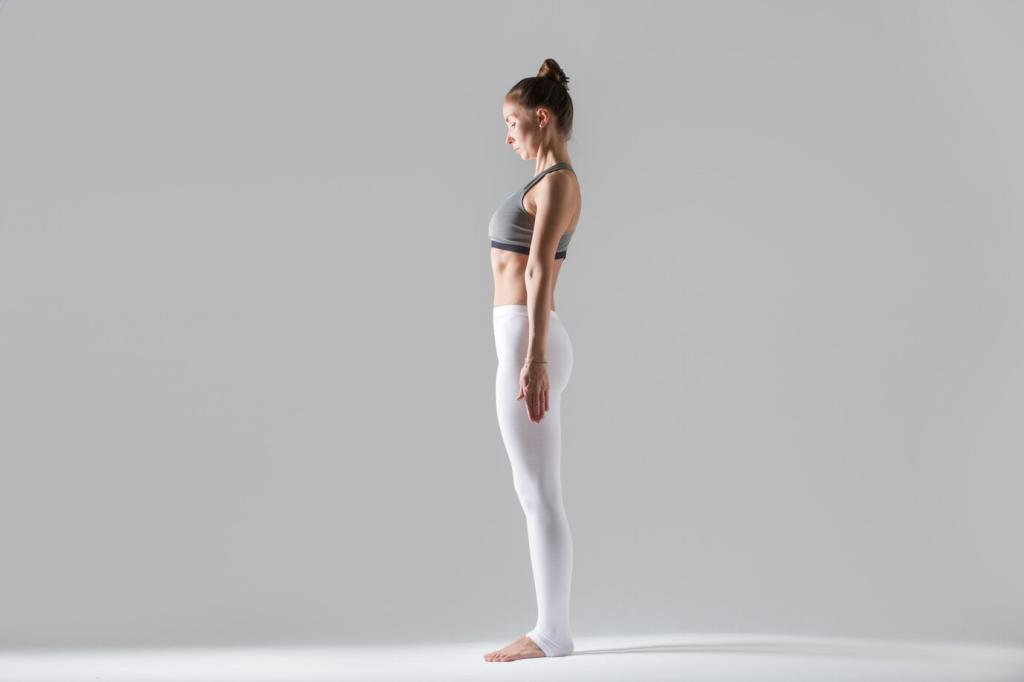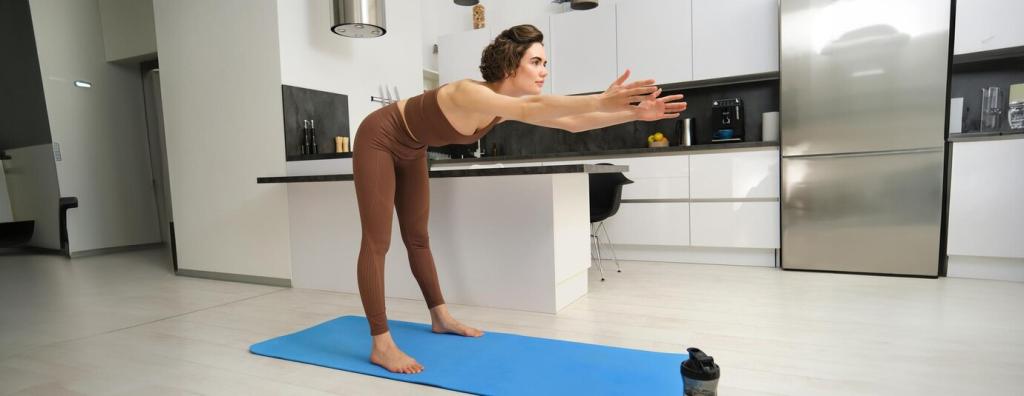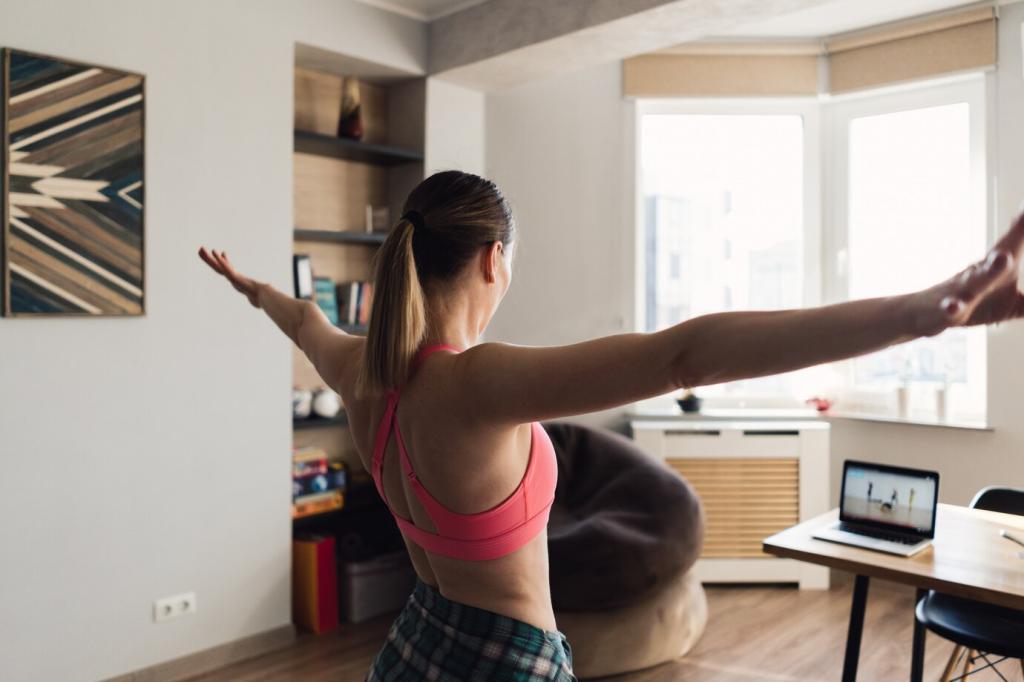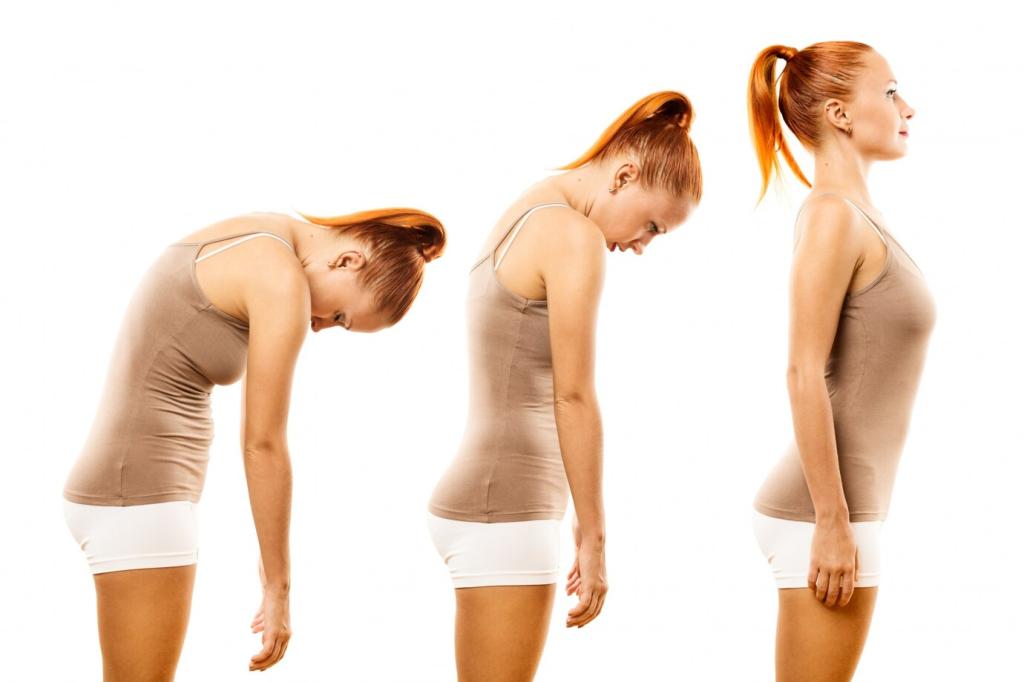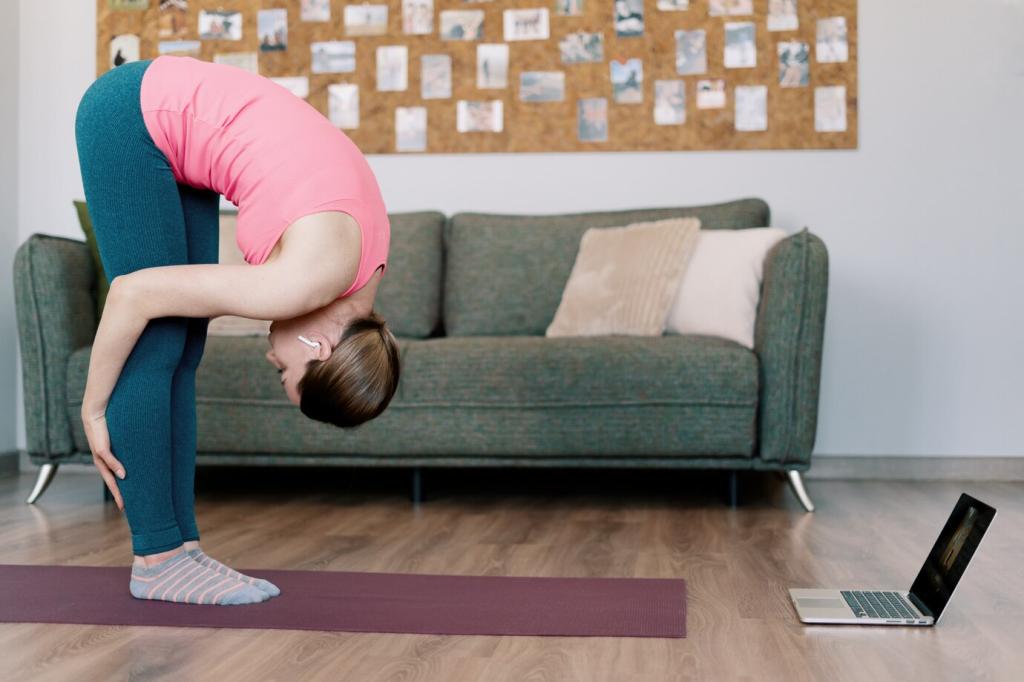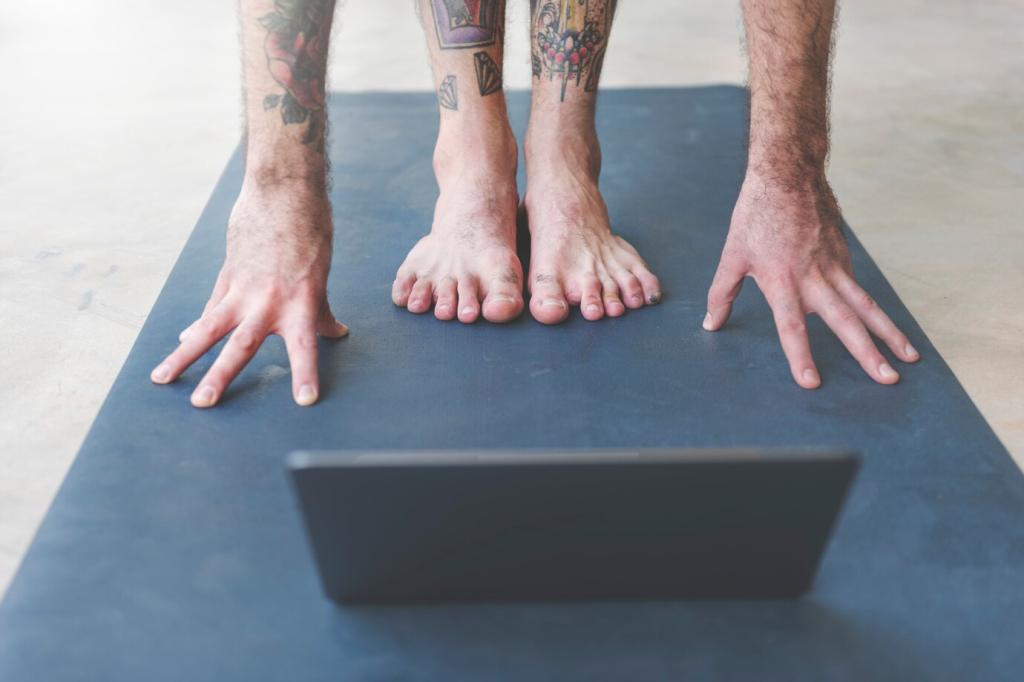Choose the Right Standing Desk and Accessories
Electric desks change heights quickly and encourage frequent posture shifts. Converters cost less and retrofit existing desks. Crank models are sturdy, though slower. Prioritize stability, range, and ease to support consistent use.
Choose the Right Standing Desk and Accessories
Consider a supportive mat, a compact footrest, and a height-adjustable stool for leaning breaks. Add a monitor arm for precise screen placement. These small upgrades multiply comfort and protect your back throughout the day.
